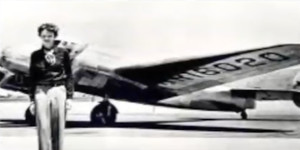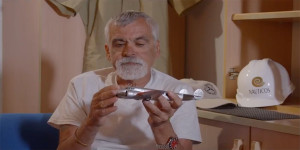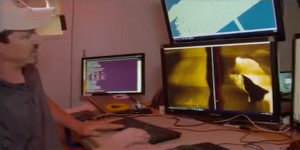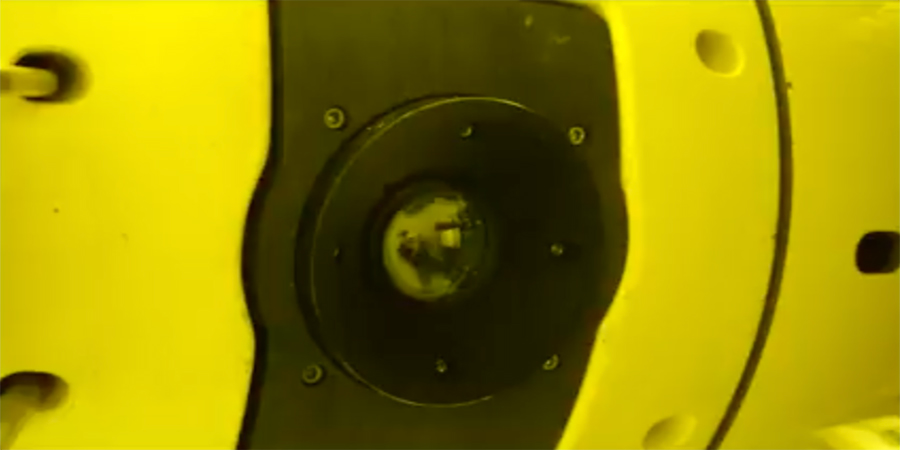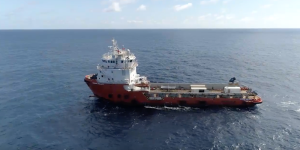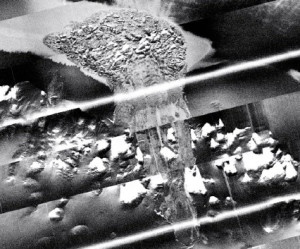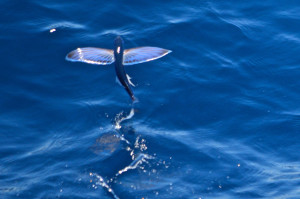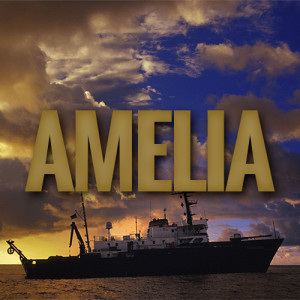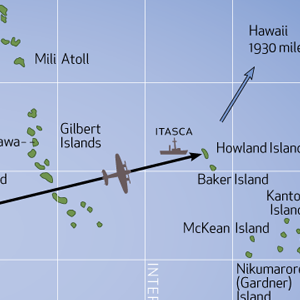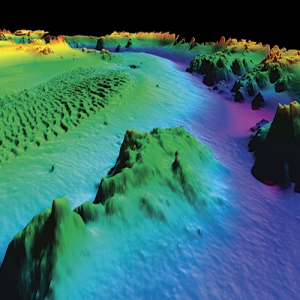Monthly Archives: March 2017 - 5. page
Meridian Passages, Volume XIII, Number 17
Central Pacific Edition
Hoops Showdown
Vigilance Victorious in Central Pacific B-Ball Challenge

The Mermaid Vigilance All-Star Team of Ikhsan “Shark Attack” O’Neil, Mardan “Blue Bear” Jordan, and Noe “El Capitán” Rodman streaked to victory today in a much anticipated and hotly contested matchup at the Aft Deck Arena. The undefeated visiting HooeyKnots may have suffered from overconfidence, as “Layup” Lorraine, “Not Michael” Jourdan, and “Pick & Roll” Packard could not match the scrappy play of the hometown favorites.
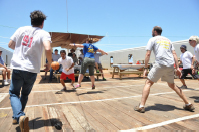
Lorraine scored first, and a second basket by Packard gave the ‘Knots an early lead. But it was not to last, as the All Stars kept up he pressure and soon took control. Coach “Spider” King called a timeout and pretended to draw up a play, hoping to trick his opponents into thinking the ‘Knots knew what they were doing. The tactic failed as the home team schooled them in what “home court advantage” means.
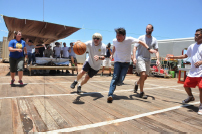
They cleverly bounced the ball off vent covers, railings, and even off the spectators to the frustration of the visitors, and finished off the “Knots with an 8-5 score. The record low tally was attributed to a particularly nasty swell and (face it) profoundly poor shooting as both teams missed repeatedly from point blank range.
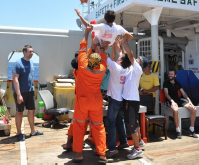
In defeat, the HooeyKnots and their fans stood at center court and sang their chosen song of hope and redemption, “Row, Row, Row Your Boat” to the quizzical looks of the Mermaid fans.
In a post-game interview, ‘Knots power forward Jourdan attributed the outcome to bad coaching, improper ball inflation, and incompetent officiating. HooeyKnot fans were clearly not pleased; one complained the referee was dishonest. There was no comment from the league, though referee Joe “Popeye” Litchfield said in his opinion the HooeyKnots were a “bunch of half-witted high tide clam diggers.”

Noe “El Capitán” Rodman praised his teammates and graciously gave the HooeyKnots credit for a good effort and nice hair. Meanwhile, rumors swirled around accusations that some inducement was offered to the referee to “keep it fair.” The source went on to say he threw the money back after the game saying something about it was “not enough.”
What’s next for the HooeyKnots? Will there be a rematch? Will free agent Lorraine hold out for a bigger contract and a supply of styrofoam cups? Will Packard be traded for transponder floats? The coming weeks will tell.
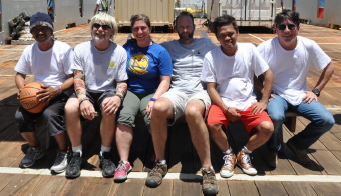
Nauticos News Night 6 — Tour of Mermaid Vigilance 1
It’s News Night on Mermaid Vigilance! Tour the vessel with “Captain” Joe Litchfield as Nauticos and the Eustace Earhart Discovery Expedition team search the Central Pacific for Amelia Earhart’s lost Lockheed Electra.
Meridian Passages, Volume XIII, Number 16
Central Pacific Edition
Living History
Carl Panhorst, Itasca Helmsman
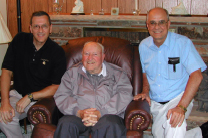 In June 2005, a documentary program on our Earhart project aired on the Travel Channel. After seeing that program, Rose Pierson contacted Nauticos about her father Rufus and her Uncle Carl Panhorst being crew members of the Coast Guard Cutter Itasca during Amelia Earhart’s flight July 2, 1937. A few days later Tom Vinson and I placed a call to Carl.
In June 2005, a documentary program on our Earhart project aired on the Travel Channel. After seeing that program, Rose Pierson contacted Nauticos about her father Rufus and her Uncle Carl Panhorst being crew members of the Coast Guard Cutter Itasca during Amelia Earhart’s flight July 2, 1937. A few days later Tom Vinson and I placed a call to Carl.
Carl started the interview b y emphatically stating “Well, let me tell you boys something – I’m 91 years old and still have all my marbles.” I looked at Tom and we both knew this was going to be good.
Carl related how he was a crewman on Itasca that fateful day when Amelia Earhart disappeared somewhere near Howland Island. He had galley duty that morning and had to stay behind on the ship while all his mates went ashore to assist with Earhart’s anticipated landing on Howland. So when Carl finished in the galley, he went up and stood on deck outside the open hatch to the radio room and listened to Earhart’s radio transmissions.
We were incredulous at this tale unfolding over the phone for we realized we were most likely speaking to the last person alive to have heard those radio transmissions. Tom asked Carl a few more questions. Then, as Carl was describing the search activities of the Itasca, he said “I’ve got pictures too!”
“You do?!” I asked.
“Yep”
At this point I knew we had to visit Carl, so I asked “Can we come out and see you?”
“Sure …. I’m not going any place” was Carl’s response.
About 10-days later, I’m in Minneapolis attending my youngest son’s second college graduation ceremony when Tom called and said he has a business trip to Arizona in two days . Quickly he changed his ticket to leave a day early with a stop in Salt Lake City, Utah. I commandeered one of the college computers and quickly booked a ticket. After the graduation, it was a fast trip home to pack a bag and run to the airport.
On the way home, I stopped long enough to buy a video camera and a portable scanner to take along. I arrived at Salt Lake City on time, collected my bag and met Tom. We caught the shuttle bus to the hotel.
It’s deja vu all over again: the hotel is on Amelia Earhart Drive. In fact, we eat supper in the Amelia Grill at the nearby Holiday Inn.
The next morning, Carl’s niece Rose Pierson with her mother Marie, picked us up and we drove an hour to Carl’s house in Provo.
We were welcomed by Carl and Wanda, his wife of 65 years, their two sons, Dan and Chuck and Dan’s wife Hilda. Lee Benson, a reporter from the Desert News was also there. It was an atmosphere of high anticipation. Tom and I explained a just bit about our project but withheld details until after we interviewed Carl as we wanted his recollections untainted by what we think. Carl re-iterated what he told us on the telephone earlier: He’s over 90, has all his marbles, doesn’t wear hearing aids, nor does he wear glasses (never did). I also observed he didn’t need a cane to get around the house. This was even more remarkable after we learned what happened to him in WWII.
We videotaped the interview with Carl for nearly 2 hours then took a break for juice and muffins. During the break and with my video tape recorder off (unfortunately), I casually asked Carl if he stayed in the Coast Guard or what he did in the years afterward.His reply was “No, I got out and got a job with the US Postal Service in Los Angles.” “But then the Japs bombed Pearl Harbor and I got drafted.” This grabbed my attention and I asked “So where did you serve – In the Pacific?”
 “No, I was in the Army Infantry and was sent to Europe” “And where in Europe?” I asked “Oh, I was all over….. I was in the battle of the Hurtgen Forest and was wounded there.” I asked how it happened.
“No, I was in the Army Infantry and was sent to Europe” “And where in Europe?” I asked “Oh, I was all over….. I was in the battle of the Hurtgen Forest and was wounded there.” I asked how it happened.
Carl very nonchalantly replied “Well we were dug-in and the Germans were shelling us for two days. At one point a shell landed near a fellow in a nearby foxhole and severely wounded him. We could hear him screaming in pain so I says to my buddy ‘We’re probably going to get it next. We might just as well be doing something useful when it happens, so let’s go get him’!
“So we jump out of our hole, run over and pick him up and we’re carrying him back to the medics when a shell burst behind us. The next thing I remember is lying on the ground with a blanket over my face. I started yelling ‘I’m alive…. I’m alive!’ A medic came over and pulled the blanket off me. I had shrapnel wounds in my shoulders and back and spent the next 9 months in hospitals.”
I thought to myself “What a tough guy (and lucky) to be wounded so badly in his youth and yet walk around at age 91 without even the use of a cane.” Meeting people like Carl Panhorst and hearing their remarkable stories is one of the most fascinating aspects of the Earhart Project. Carl passed away on Jan. 6, 2008 at age 93. It was both an honor and privilege to have known this great man.
— Rod Blocksome
Meridian Passages, Volume XIII, Number 15
Central Pacific Edition
Thanks to hard work and good performance by REMUS OPS, we are being treated to some amazing imagery from the bottom of the ocean. A particularly dramatic example of what is probably an undersea landslide is shown here. Several sonar passes were made over this area with each swath overlapping. After the REMUS collected the data, Jeff merged it together with navigation to make a mosaic, yielding the composite image shown here.
 To get an idea of the scale of this feature, the spacing between the light stripes running across the scene is 1,100 meters (0.6 nm). That makes the pile of rubble at the top of the screen about a half mile across. The stripes represent the nadir of the sonar (line directly below) where imagery is poor. We overlap swaths to be sure to cover everything.
To get an idea of the scale of this feature, the spacing between the light stripes running across the scene is 1,100 meters (0.6 nm). That makes the pile of rubble at the top of the screen about a half mile across. The stripes represent the nadir of the sonar (line directly below) where imagery is poor. We overlap swaths to be sure to cover everything.
As interesting as this terrain is, we are hoping to avoid a lot of rough bottom, as crevices and craters can hide our target. Also, steep ridges can be a hazard for the AUV as we try to skim the sonar just off the bottom. However, we must take what the sea will give us, and these topographic features are not only interesting, but provide some geographic “tie points” to help us assess our navigation accuracy and to ensure we line up with older data. Fortunately, the vast majority of the seafloor in this region is quite flat and featureless, and the Electra should stand out clearly when we image it.
Operations Summary
Mission 007 concluded yesterday morning and Mission 008 started after a swift turnaround. Two notable improvements were achieved. The battery pack service life was extended to permit more lane coverage per mission, meaning more survey time available. And the on deck service interval was reduced by a significant amount, meaning more survey time available. All of this speaks well for the teamwork that is evident out here. Well done everyone!
S/V Sauvage Arrival Imminent:
The meeting at sea of the sailing vessel Sauvage and Mermaid Vigilance is planned for Sunday. A personnel transfer by small boat will occur in which explorer Alan Eustace will join the team and participate in the mission for a number of days. Alan has come all the way from California to be with us. Be sure to welcome him aboard.
We’ll also host a visitor, Nino Wattrelot, crewmember of Sauvage and licensed engineer in the megayacht industry. He asked for a tour of the Mermaid and to have a look at the technology we use. A lifelong sailor, Nino was raised on sailing yachts. He has traveled extensively around the Pacific. You are encouraged to chat with Nino – just remember security at all times, “You are not free to discuss details of the operation.”
Meridian Passages, Volume XIII, Number 14
Central Pacific Edition
Wildlife Issue
What’s Out Here
 Ornithologically speaking, this place is for the birds! Boobies and terns, mainly. Boobies most likely get their name from the Spanish word bobo, meaning dunce. Boobies had the unfortunate (for them) habit of landing on sailing ships. Since they had no fear of humans they quickly became part of the evening meal.
Ornithologically speaking, this place is for the birds! Boobies and terns, mainly. Boobies most likely get their name from the Spanish word bobo, meaning dunce. Boobies had the unfortunate (for them) habit of landing on sailing ships. Since they had no fear of humans they quickly became part of the evening meal.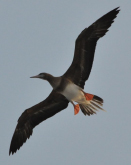
Fish are also flying around in profusion. We see them skimming the wavetops ahead of our bow. Rumor has it a wahoo was observed the other day, but we’re not telling since fishing is not allowed on Vigilance. We will tell about the huge squid that are attracted to the bright lights astern during REMUS recoveries.

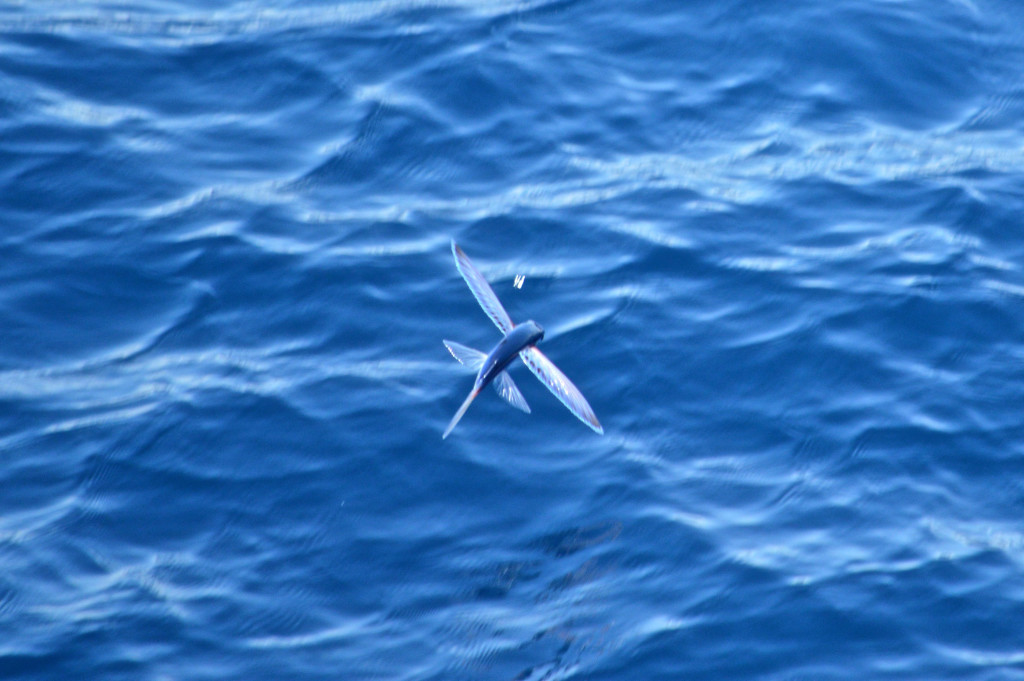 Of course the focus of our endeavors is well below the waves, and we are lucky to have a chance to see what’s down there, thanks to REMUS. Though we are mainly engaged in a sonar search for now, we did test out the camera on a sortie and managed to capture a few deep sea critters. Common on the seafloor here are acorn worms, which have no bones, no eyes and no brains with soft and gelatinous bodies. They crawl over the surface of the mud slurping the sediment and excreting a trail behind them. Yuck.
Of course the focus of our endeavors is well below the waves, and we are lucky to have a chance to see what’s down there, thanks to REMUS. Though we are mainly engaged in a sonar search for now, we did test out the camera on a sortie and managed to capture a few deep sea critters. Common on the seafloor here are acorn worms, which have no bones, no eyes and no brains with soft and gelatinous bodies. They crawl over the surface of the mud slurping the sediment and excreting a trail behind them. Yuck.
 The specimen here and the other seafloor photos here were captured by REMUS at a depth of greater than 18,000 feet.
The specimen here and the other seafloor photos here were captured by REMUS at a depth of greater than 18,000 feet.
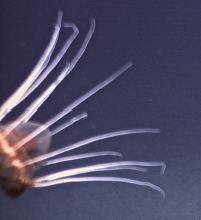 The helmet jelly is found in every ocean of the world except the Arctic, as deep as 7,000 meters (23,000 feet). They are 90% water and the rest is tissue and a gelatinous mass. They light themselves from within with bioluminescence.
The helmet jelly is found in every ocean of the world except the Arctic, as deep as 7,000 meters (23,000 feet). They are 90% water and the rest is tissue and a gelatinous mass. They light themselves from within with bioluminescence.
Umbrella octopuses have a web of skin between the tentacles. They swim up above the ocean floor, spread their tentacles and float down collecting food looking like an opened umbrella.

 The octopus above is seen upside down, probably skittering away from the AUV. We look forward to seeing more exotic creatures of the deep the next time we turn on REMUS’s cameras.
The octopus above is seen upside down, probably skittering away from the AUV. We look forward to seeing more exotic creatures of the deep the next time we turn on REMUS’s cameras.
—Sue Morris

